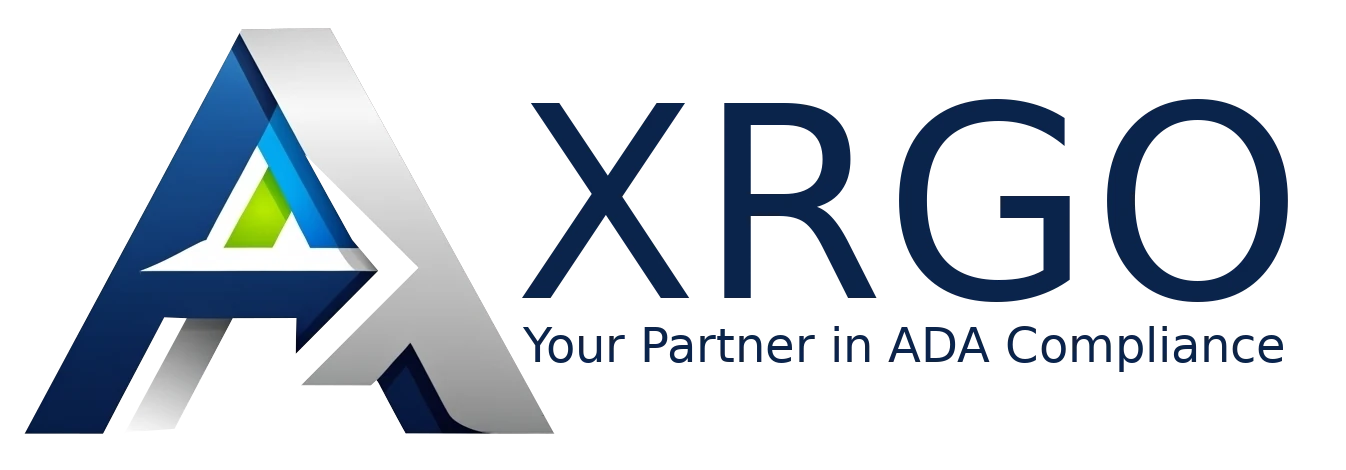The Solar Boom Is About to Hit the Bust
Right now, solar companies are breaking records. Crews are working overtime, homeowners are rushing to install, and jobs in the U.S. solar sector just hit nearly 280,000.
But here’s the problem: the 30% federal tax credit ends in 2025, and history shows what happens when subsidies disappear. In Spain, Germany, and China, markets collapsed overnight — companies folded, jobs vanished, and installations dropped by 80–90%.
The same storm is brewing here.
The good news? Some solar companies will survive and even thrive. The difference will come down to how they prepare now:
- A website that sells, not just informs
- Technology that automates and reduces costs
- Social media that educates and builds trust
- Diversification into storage, efficiency, and service contracts
The coming solar crash isn’t the end, it’s a reset. The companies that think like energy tech firms, not just installers, will own the future.
Beyond the Boom: A Survival Guide for the Post-Incentive Solar Market
The Boom: A Historic High
The solar industry is living through a historic moment. Across the globe, solar installations are hitting record levels. In the first half of 2025 alone, more than 380 gigawatts of new solar capacity were installed worldwide—a staggering 64% increase compared to the same period in 2024. In the United States, solar companies are busier than ever, working overtime, hiring new crews, and racing against the clock to complete projects before a looming deadline.
That deadline is the expiration of the 30% federal solar tax credit for residential systems, part of the Inflation Reduction Act. Homeowners who want to claim thousands of dollars in government savings must have their systems installed and operational by December 31, 2025. With average installation timelines stretching 60 to 90 days or longer, the rush is on.
This is not the first time the solar industry has seen a boom tied to incentives, and the cycle is playing out with predictable intensity. Customers are rushing to sign contracts, installers are working weekends, and new workers are being trained at record pace. In 2023, solar jobs in the U.S. grew by nearly 6%, reaching almost 280,000 positions, the highest ever recorded. Globally, more than 7.1 million people are employed in solar PV, representing nearly half of all renewable energy jobs worldwide.
On the surface, this is the picture of unstoppable growth. But history—and the policy calendar—suggest another story is coming.
The Bust: When the Music Stops
The solar industry’s explosive growth has always been tightly linked to government policy. In Spain during the late 2000s, the government slashed its generous feed-in tariffs, and the market collapsed overnight. Installations dropped by more than 90% in a single year, wiping out thousands of jobs and bankrupting companies that had grown fat on subsidy-driven demand.
A similar story is unfolding again. The U.S. is not the only country reducing solar incentives.
- China is rolling back subsidies, moving away from guaranteed feed-in tariffs and forcing projects to compete at market-based rates.
- Germany passed the “Solar Peak Act,” eliminating tariffs when wholesale electricity prices go negative, and is now openly debating phasing out subsidies for small rooftop systems altogether.
- Across the European Union, subsidy cuts have led to the first decline in solar rollout in over a decade.
- Several other countries—the U.K., Denmark, Cyprus, Bosnia, and others—have closed their feed-in tariff programs to new applicants.
In the U.S., the phase-out of the 30% tax credit in 2025 will likely trigger the same boom-bust cycle. Analysts expect a massive wave of installations before the deadline, followed by a sharp drop-off in 2026 and 2027.
The Fallout: The Coming Solar Shakeout
What happens when demand disappears? The consequences will be severe for unprepared companies.
- Demand Falls: Once the incentive disappears, many homeowners and businesses will wait—or cancel plans altogether—to see if costs drop further. That means installers who built capacity for the boom will be left with bloated payrolls and idle crews.
- Companies Fold: Smaller or overleveraged installers, who expanded too aggressively during the rush, will find themselves unable to survive the lean years. This has already happened in past cycles in Spain, Germany, and even in U.S. wind energy markets.
- Jobs Vanish: Globally, solar employs millions, but those jobs are highly sensitive to policy shifts. Tens of thousands of U.S. jobs could vanish if installations fall sharply in 2026. Europe is already seeing layoffs as subsidy reductions bite.
The industry won’t vanish entirely—solar has reached grid parity in many regions, meaning it can compete on price without subsidies. But the boom days will end, and with them, the easy profits that came from government-driven demand.
The Survivors: How to Thrive in a Post-Subsidy World
The companies that will thrive after 2025 are the ones preparing now. While competitors ride the subsidy wave and hope for the best, smart firms are investing in technology, efficiency, and branding. They understand that survival will require more than panels and permits. It will require becoming trusted energy partners—and building digital-first businesses that attract, convert, and retain customers even in a tighter market.
Here’s how.
1. Build a Website That Sells
Most solar websites today are slow, outdated, and little more than digital brochures. That’s a wasted opportunity. In the coming downturn, a company’s website must become its top-performing salesperson.
- Speed + Compliance: A lightning-fast site that’s ADA-compliant and optimized for SEO will outrank competitors in Google results. When marketing budgets shrink industry-wide, organic traffic will be gold.
- Interactive Tools: Solar savings calculators, financing estimators, and energy quizzes turn curiosity into qualified leads. A homeowner who spends 5 minutes on your calculator is 10x more likely to convert.
- Localized Landing Pages: Target “Solar in Austin” or “Best solar for high electric bills in Florida.” Owning local search will bring in leads long after national ad spending slows.
- Transparent Pricing: Customers don’t want vague promises; they want real numbers. Offering dynamic estimates builds trust.
A great website is more than marketing—it’s a lead engine that runs 24/7, filling the pipeline when competitors are quiet.
2. Embrace Technology to Improve Efficiency
When incentives disappear, margins tighten. Companies that survive will be the ones that use technology to do more with less.
- CRM + Automation: AI-driven customer relationship management can handle follow-ups, drip campaigns, and scheduling automatically. This ensures no lead slips through the cracks.
- Virtual Assessments: Using drones and satellite data to design systems eliminates wasted truck rolls and speeds up quoting.
- Customer Portals: A branded dashboard where customers track production, savings, and maintenance requests builds long-term trust.
- Analytics: AI-powered marketing analytics identify which leads are hottest and which campaigns are working, preventing wasted ad dollars.
These tools not only cut costs but also differentiate a company from “the guy with a truck and a ladder.”
3. Use Social Media as a Megaphone
When the subsidy boom ends, the companies that own attention will still win customers. Social media is the cheapest way to dominate the conversation.
- Education Builds Authority: Short TikTok or YouTube clips answering “Is solar still worth it after the tax credit?” position a company as the trusted guide in uncertain times.
- Customer Stories as Proof: Real before-and-after utility bills, drone videos of installs, and happy customer interviews are powerful trust builders.
- Paid Local Ads: Hyper-targeted Facebook or Instagram ads like “Dallas homeowners—lock in solar savings before rates rise again” can keep leads flowing.
- Community Presence: Running a local Facebook group, answering questions on Nextdoor, or hosting free webinars establishes authority.
Social media isn’t just lead gen; it’s reputation insurance. When the bust hits, the companies with the loudest voices will scoop up the limited demand left in the market.
4. Diversify Beyond Rooftop Solar
Finally, the strongest companies won’t stay tied to a single revenue stream. They will expand into related services that keep revenue stable.
- Solar + Storage: Bundling batteries is the natural next step. It increases margins and makes systems valuable even without subsidies.
- Energy Efficiency Services: Smart thermostats, EV chargers, and efficiency upgrades expand the customer relationship.
- Commercial & Industrial Projects: Larger clients care about long-term savings, not just short-term credits, making them less incentive-sensitive.
- Service Contracts: Maintenance and monitoring keep crews busy even when new installs slow.
The companies that think like energy service providers, not just installers, will build resilience.
The Blueprint for a Post-Subsidy World
Put it all together, and the strategy is clear:
- Use websites to dominate local search and capture leads.
- Deploy technology to cut overhead and improve customer experience.
- Leverage social media to educate, engage, and build trust.
- Diversify offerings to stabilize revenue streams.
This is how solar companies can transform from vulnerable, subsidy-dependent installers into future-proofed energy leaders.
Conclusion: From Bust to Opportunity
The solar industry is at a crossroads. Today, it is booming, with record installations, millions employed, and government incentives fueling a once-in-a-generation rush. But as history shows, booms tied to policy are always followed by busts. The expiration of the U.S. federal tax credit in 2025—along with subsidy cuts in China, Germany, and across Europe—will create a painful shakeout.
Thousands of jobs will vanish. Companies that scaled recklessly will fold. The headlines will talk of a “solar crash.”
But for the companies that prepare, the crash is not the end. It is the reset—the chance to outcompete slower rivals, capture attention, and build lasting businesses. With smart websites, efficient technology, aggressive social media, and diversified offerings, solar companies can continue to grow while others tread water.
The future of solar will belong to the companies that act like energy tech firms, not just contractors. And the time to start building that future is now—before the lights of the boom flicker out.
Frequently Asked Questions
Homeowners are rushing to install before the U.S. federal solar tax credit expires at the end of 2025. Installers are hiring aggressively and breaking installation records.
Demand typically drops sharply. In Spain and Germany, solar installations fell by more than 80% when government incentives were removed, leading to layoffs and bankruptcies.
No. Countries like China, Germany, and the U.K. are also reducing or eliminating solar subsidies. This is a global trend.
Globally, about 7.1 million people work in solar PV. In the U.S., the sector employs nearly 280,000 workers, the highest number ever.
No. Solar is cost-competitive in many regions, but growth will slow and many smaller or poorly prepared companies may not survive.
By investing in fast, SEO-friendly websites, using technology to automate processes, leveraging social media to stay visible, and diversifying into storage, efficiency, and service contracts.
Yes, if they adapt. Companies that position themselves as trusted energy service providers, not just installers, can continue to win customers and thrive in a post-subsidy world.



Comments
Log in to add a comment.